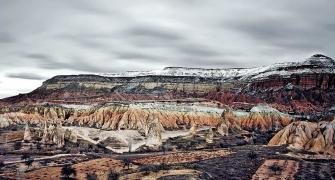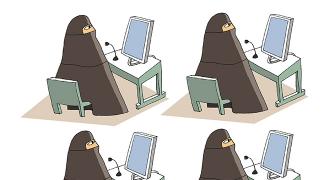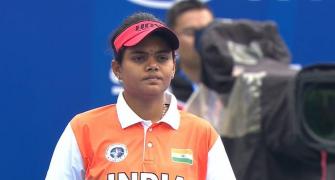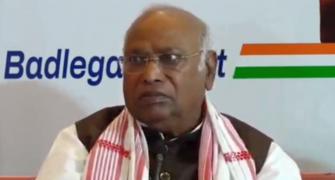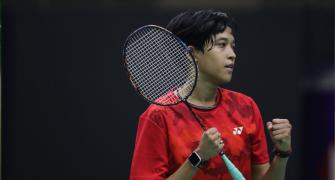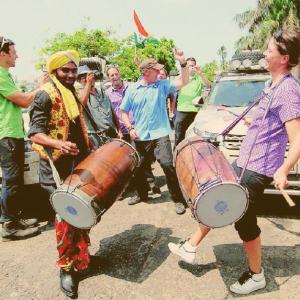The enduring legacy of trade routes lies in shared stories and religious diversity.
Can the India-Middle East-Europe Economic corridor harness this legacy to empower nations, asks Arundhuti Dasgupta.

As the tents rolled up on the G20 jamboree in New Delhi last month, and a flurry of hugs and triumphant smiles greeted a blitzkrieg of flashing lights, a remarkable inter-continental trade alliance made its place in the world.
The India-Middle East-Europe Economic corridor, or IMEC, which was soon dubbed the New Spice Route, is being seen as one of the biggest payouts of the season.
It has been called historic, a game changer, and the White House has called it a project that will 'usher in a new era of connectivity'.
It may well live up to the hyperbole. But the negotiating heft on display at the G20 tables is no guarantor of success.
As accounts of old maritime corridors and land routes that linked East to West reveal, trade is as much about deals and bargains as it is about a spirit of exchange that transcends the transactional.
Along the Silk Road, a fairly recent name given by a German geologist that does not really do justice to the network of routes that it covers, there was a back-and-forth of ideas, stories and goods.
Stories spread through the markets of Samarkand (Uzbekistan), Kabul and Balkh (Afghanistan), Taklamakan (China) and several other bustling points of sale along the road.
Exchanges were just as energetic along the maritime runways that connected the ports of Masulipatnam (Machilipatnam in present-day Andhra Pradesh) to the Golden Chersonese (the Malay peninsula) and to Rome.
Trade between the Indian kingdoms and the Malay peninsula date back to 200 BCE, according to historian Barbara Watson Andaya (Narratives, Routes and Intersections in pre-modern Asia).
The markets drew the attention of writers, explorers and cartographers.
A Chinese geographer writing two millennia ago marvelled at the legendary negotiating skills of the inhabitants of Bactria (Afghanistan), while Ibn Battuta, an Arabic explorer, wrote about Black Sea ports that were heaped with trade from steppe: Grains, timber, furs, salt, wax, and honey.

Trade illuminated the world, through precious stones, silver, spices, silk, and other items that hopped from port to port or oasis to oasis and through the stories that travelled alongside.
For example, tales of heroes across cultures bear an uncanny resemblance to each other.
Be it Rustom and Sohrab in the Shahnameh or the Irish legend of Cuchulain and Conlai, the tragic life of a hero plays out in very similar ways.
Everywhere, the foundational ideas of heroism and good and evil drew upon a common set of motifs and belief systems that flowed along the trade routes.
Similarly, folk tales and ideas bounced around the world, regaling audiences everywhere, and creating a spidery trail of analogous ideologies and social codes.
For instance, the story of Sheikh Chilli from India and Persia is about a young man who, overjoyed with his chance possession of a jug full of oil, began dreaming about all that he would do with the money he would earn upon its sale, only to drop it all and weep when the castles that he had built in his mind disappeared in a flash.
The same idea emerges in a story about a daydreaming son of a rich merchant in Baghdad and an old woman with broken pots of milk in several parts of Europe. The lesson everywhere is: Don't count your chickens before they hatch.
Ancient networks helped people travel, learn, inform and exchange.
Algebra, the early forms of vaccination, the numerical significance of zero found their way West from the East, without compensation or copyright.
As did literary works such as the Panchatantra, The One Thousand and One Nights of Scheherazade and the Shahnameh, while epics such as the Ramayana and the Mahabharata found a million different interpretations and listeners in China, Indonesia, Malaysia and the Philippines.
Merchants on the old trade routes were not just purveyors of goods, they found friends and lovers among the people they bartered with.
In Peshawar in Pakistan, its arterial street is called Quissa Khwani Bazaar or the storytellers' market, harking back to a time when the place buzzed with traders from all parts of the world, where one imagines they spoke of Panchatantra and Ibn Battuta.
Historian Peter Frankopan writes (The Silk Roads: A New History of the World) about how trade networks play a central role in global history while serving as conduits for religious ideas.
Consider, for instance, the halo, a common visual symbol across religions.
While it is not clear where it originated, it is believed to have hitchhiked its way through the world on the Silk Road.
As a universal marker of divinity, the halo has found followers in every religion and it may well be one of the most lasting trades to have ever taken place on the route.
Ancient trade routes powered civilisations to glory and also dragged them into ruin, but the legacy they leave behind is that of shared storytelling and religious pluralism.
The challenge for IMEC would be to use its inheritance to empower nations in the new geopolitical map of the world.
Feature Presentation: Rajesh Alva/Rediff.com



